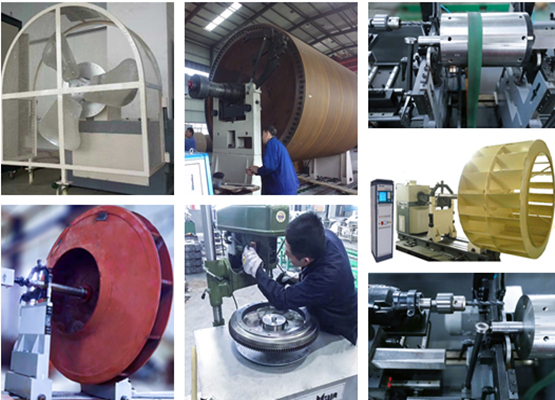Key characteristics of vibration spectrum: The problem of rotor imbalance is generally characterized by high rotational frequency vibration occupying the core, usually with rotational frequency vibration components exceeding or equivalent to about 80% of its direct frequency vibration.

Unbalanced force has necessary directionality, centrifugal force is uniform on a radial basis, and the motion trajectory of the shaft and supporting bearings is similar to a circle. Obviously, because the vertical support stiffness of the bearing seat exceeds the horizontal direction, the normal motion trajectory of the shaft and supporting bearings is elliptical, which means that the horizontal vibration is 1.5 to 2 times greater than the vertical vibration under normal circumstances. If this standard is exceeded, there will be other problems, especially resonance problems.
Compared to axial vibration, radial vibration (horizontal and vertical) is not as significant when unbalance is the core issue (except for cantilever rotors).
The directionality of the problem of unbalanced cantilever rotors is generally characterized by large radial and axial vibrations, which are caused by both static and couple imbalances. Therefore, it is generally necessary to carry out balance correction using two planes.
The rotor has an unbalanced vibration problem, and its vibration phase is stable and can be the same. The problem of imbalance will promote the expansion of resonance amplitude. If the working speed of the rotor is close to the resonance point at its system natural frequency, a small amount of unbalanced vibration will expand by 10 to 50 times.
The phase manifestation of rotor imbalance problem is based on the same (+/-30 °) phase difference obtained by detecting the horizontal direction of the rotor input and output bearings and measuring the vertical direction of the rotor input and output bearings. Otherwise, the key issue is not dynamic balance problem. For example, if the vibration phase difference detected in the horizontal direction of the input and output bearings of a motor is 30 °, and the similarity of the vibration phase difference detected in the vertical direction of the input and output bearings is 150 °, then the technician attempting to perform dynamic balancing operation on this rotor seems to be wasting time.

Unbalanced force has necessary directionality, centrifugal force is uniform on a radial basis, and the motion trajectory of the shaft and supporting bearings is similar to a circle. Obviously, because the vertical support stiffness of the bearing seat exceeds the horizontal direction, the normal motion trajectory of the shaft and supporting bearings is elliptical, which means that the horizontal vibration is 1.5 to 2 times greater than the vertical vibration under normal circumstances. If this standard is exceeded, there will be other problems, especially resonance problems.
Compared to axial vibration, radial vibration (horizontal and vertical) is not as significant when unbalance is the core issue (except for cantilever rotors).
The directionality of the problem of unbalanced cantilever rotors is generally characterized by large radial and axial vibrations, which are caused by both static and couple imbalances. Therefore, it is generally necessary to carry out balance correction using two planes.
The rotor has an unbalanced vibration problem, and its vibration phase is stable and can be the same. The problem of imbalance will promote the expansion of resonance amplitude. If the working speed of the rotor is close to the resonance point at its system natural frequency, a small amount of unbalanced vibration will expand by 10 to 50 times.
The phase manifestation of rotor imbalance problem is based on the same (+/-30 °) phase difference obtained by detecting the horizontal direction of the rotor input and output bearings and measuring the vertical direction of the rotor input and output bearings. Otherwise, the key issue is not dynamic balance problem. For example, if the vibration phase difference detected in the horizontal direction of the input and output bearings of a motor is 30 °, and the similarity of the vibration phase difference detected in the vertical direction of the input and output bearings is 150 °, then the technician attempting to perform dynamic balancing operation on this rotor seems to be wasting time.
145 browse
